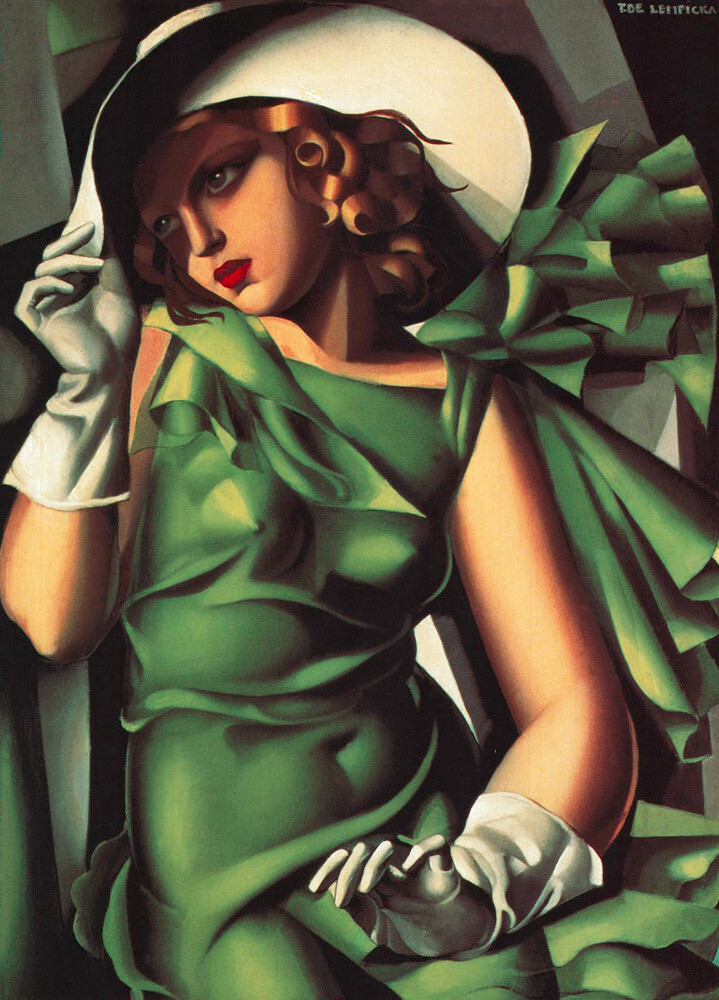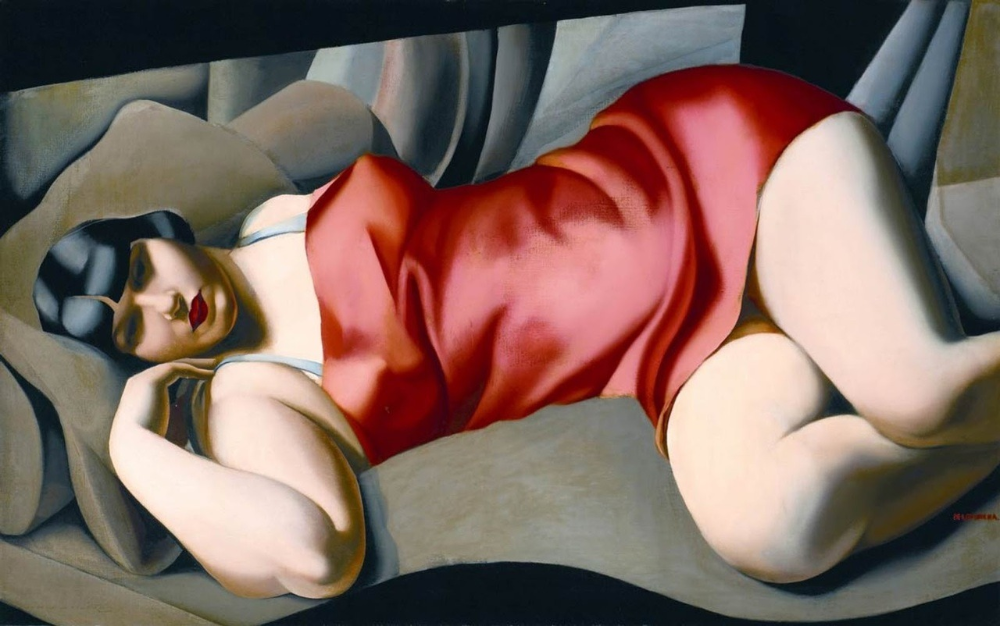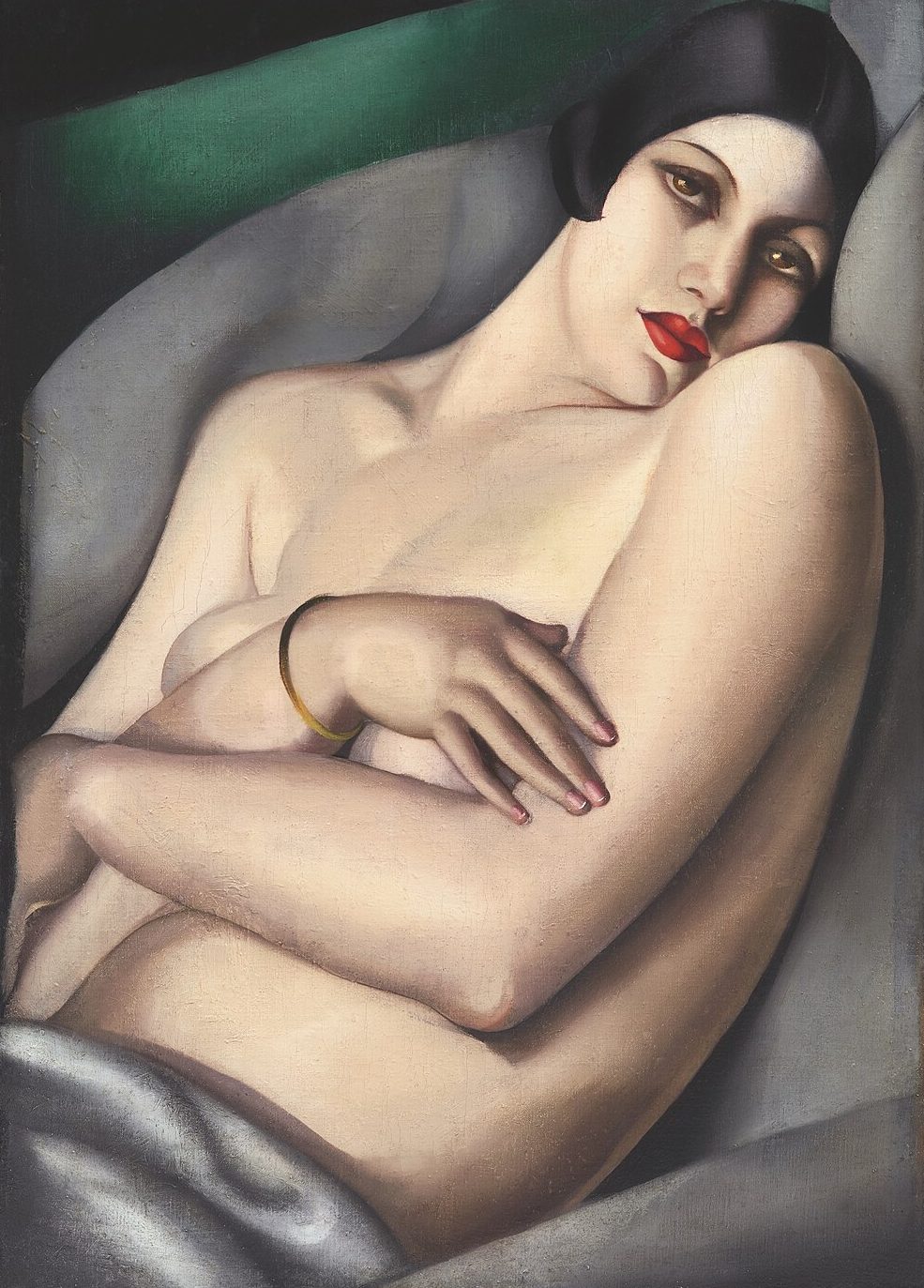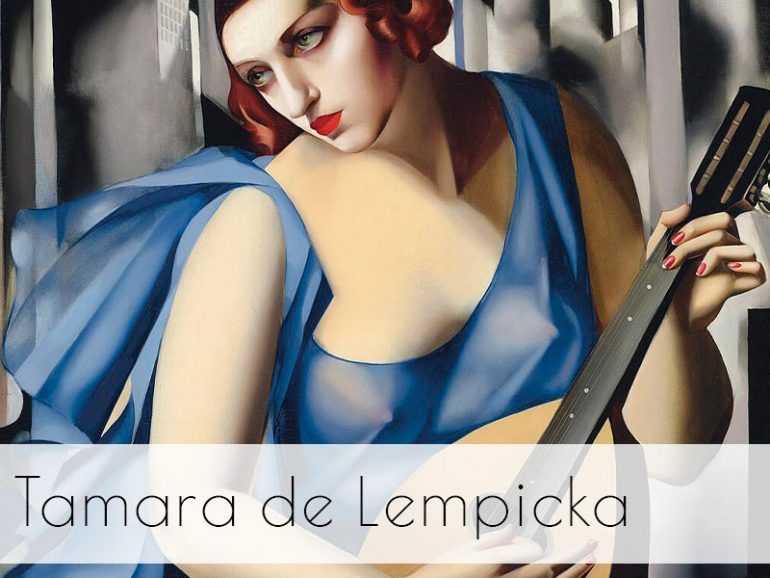Tamara de Lempicka, a pioneering figure in the Art Deco movement of the early 20th century, left an indelible mark on the art world with her distinctive style and bold approach to portraiture. Born in Warsaw, Poland, in 1898, she would later become a prominent figure in the bohemian circles of Paris, capturing the essence of the Roaring Twenties and the Jazz Age. Our blog post delves into the life and works of Tamara de Lempicka, exploring four of her iconic pieces that showcase her mastery in the art of portrait painting.

“Portrait of a Young Girl in a Green Dress” (1927): Medium: Oil on canvas
The vibrant and vivacious atmosphere of the 1920s, characterized by social and cultural revolutions, heavily influenced this particular piece. The green dress worn by the subject symbolizes the spirit of the era, reflecting the newfound sense of liberation and experimentation.
Tamara de Lempicka’s ability to infuse her work with the zeitgeist of the time is evident in this portrait. The use of bold colours and sharp angles creates a visually striking image, capturing the essence of Art Deco elegance. Currently housed in the private collection of a prominent art enthusiast, this masterpiece occasionally makes appearances in special exhibitions around the world.

“Autoportrait (Tamara in a Green Bugatti)” (1929): Medium: Oil on panel
Tamara’s love for speed and modernity is palpable in this self-portrait. The roaring engine of the Bugatti, an iconic car of the era, serves as a metaphor for the artist’s dynamic and self-assured personality.
Born out of the artist’s fascination with the burgeoning automotive culture of the 1920s, this self-portrait is a testament to Tamara de Lempicka’s ability to intertwine personal passion with artistic expression. Currently housed in a private collection, “Autoportrait (Tamara in a Green Bugatti)” occasionally travels as part of thematic exhibitions dedicated to the Art Deco movement.

“The Pink Tunic” (1927): Medium: Oil on panel
The influence of Renaissance art is evident in this portrait, with the subject’s pose reminiscent of classical portraiture. However, Tamara injects a modern twist by using a bold colour palette and geometric shapes, signalling the departure from traditional artistic norms. “The Pink Tunic” exemplifies Tamara de Lempicka’s ability to merge classical and contemporary elements seamlessly. The androgynous figure challenges societal norms, adding a layer of progressive thought to the composition.
This masterpiece is part of the collection at the Musée national d’art moderne in Paris, offering art enthusiasts a chance to witness the evolution of portraiture during the Art Deco era.

“The Dream” (1927): Medium: Oil on panel
Tamara de Lempicka’s “The Dream” stands as a testament to the artist’s ability to merge classical artistry with the bold aesthetics of the Art Deco movement. Painted in 1927, this masterpiece encapsulates the spirit of the era while showcasing Lempicka’s distinctive style. The use of oil allowed her to achieve the rich and vibrant colours that became a hallmark of her work.
The painting exudes an air of sensuality and mystery, typical of Lempicka’s exploration of female empowerment and eroticism. The subject, a reclining nude woman, is depicted against a backdrop of lush, flowing fabrics and geometric patterns. The dreamlike quality of the scene adds an element of surrealism, challenging traditional notions of portraiture.
Lempicka’s fascination with the Art Deco movement, which was characterized by bold colours, sharp angles, and a celebration of modernity, is evident. The portrayal of the female form in a state of repose reflects the liberation and experimentation that defined the cultural and social landscape of the 1920s. While Tamara de Lempicka was undoubtedly a trailblazer in the Art Deco movement, her work also bears the influence of classical art. As viewers gaze upon the reclining figure, they are transported into the artist’s dreamlike vision, experiencing the allure and sophistication that defined the Roaring Twenties.

Tamara de Lempicka’s legacy endures through her revolutionary approach to portraiture, blending classical influences with the bold aesthetics of the Art Deco movement. Her ability to capture the spirit of the era, continues to captivate art enthusiasts worldwide, ensuring her place as a trailblazer in the annals of art history.
If you would like to receive a roundup of all of our blog posts once a week to keep you inspired in your inbox, why not sign up to our newsletter. You can access our sign up at the top of our page. If you are a London Art College student and you would like your artwork featured here, drop us a line at any time.

